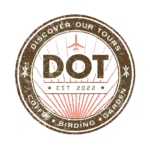We were staying in an area of extensive coffee plantations, so this morning we took the Espírito Santo Coffee Tour to learn about this important crop. Our guide Ronnie first told us about the coffee fruits, which normally have two seeds, but the premium peaberry has only one (a genetic mutation that causes one seed to abort, so all resources go into a single seed so it gets bigger).

The entrance to the coffee tour (L), a display of old-time coffee bags and typical wooden oxcart (LC), Ronnie tells the group about coffee fruits (RC) and shows the seeds (“beans” inside the red pulpy fruit (R).
From there we walked to a replica of an old Costa Rican house that was outfitted with typical items of a household of the era before electricity. This was also the place where Ronnie showed how to make drip coffee from the ground beans.

The front of the typical two-room Costa Rican house (L), inside the bedroom (C) and inside the kitchen (R).
We sat on benches around the porch or stood out on the grass under a blooming poró tree (where a variety of small birds, many of them blue-grey tanagers, foraged for nectar in the bright orange flowers) as he told us about the process, demonstrated the steeping and filtering stages, then poured the dark brown liquid into small cups so we could sample the beverage. Instead of just drinking it, Ronnie had us slurp a very small amount, bringing a lot of air in with the liquid to clean the mouth. The first sample produced a very bitter aftertaste that was greatly reduced in subsequent slurpings. After doing that three times, then we could drink the coffee and enjoy the deep, rich flavor.

Learning about making coffee from roasted, ground beans (L), the foamy liquid produced after adding hot water to the grounds (LC), pouring the liquid through a filter (C and RC) and dispensing the finished product for tasting (R).
Next we went on to see the coffee shrubs and learn how the ripe red fruits are picked by hand and put into a basket strapped around the waist of the workers.

Coffee shrubs (L), a single flower, out of season (LC), fruits on the bushes (RC) and closeup of cluster of fruits or berries (R).
From there we saw the receiving station where the fruits are delivered (and the “coffee abacus” to keep track of the number of loads delivered) and a demonstration of how the beans are dried in the sun. We got to handle some of those drying and then a small batch of already dried beans, their papery outer covering slipping off very readily.

Receiving station where harvested berries are dumped from a small truck (L), the device for keeping track of the number of loads (LC), berries drying on the ground (RC) and closeup of drying berries (R).

Ronnie tells Lori, Della and Barb about the drying process (L), coffee beans (C), and closeup of one bean with papery seed coat removed (R).
Now it was time to go into the noisy roasting and packaging facility, where loud machinery was running and a few workers were putting the finished product into packages for shipping. Finally we ended in the souvenir shop where there was a small selection of arts and crafts, as well as their coffee, chocolate-covered coffee beans and locally made liqueurs.

Ronnie discusses how the beans are roasted (L), workers packaging special coffee (LC), packages of coffee coming of conveyor belt from packaging machine (RC) and pallet of coffee ready for shipment (R).
Our lunch stop was at the cafeteria restaurant upstairs at Fabrica de Carrretas Eloy Alfaro one of the oldest traditional oxcart factories in the area of Sarchi. After the tasty meal of typical Costa Rican food we had time to take a short tour to learn how the wooden carts are manufactured and then intricately painted by hand.

Oxcart and decorated walls (L), historic oxcart wheels on display (LC), woodshop (C), a painter at work (R).
Our final scheduled activity of the tour was a visit to Else Kientzler Botanical Garden in Sarchi. Here we walked through the collections of tropical plants from around the world with a local garden guide to learn about the history of the garden and some of the more interesting plants grown there.

Reception building at Else Kientzler Botanical Garden (L), looking from porch of reception (LC), the group walks under royal palms, the national “tree” of Cuba (C), other palms in the gardens (RC), Mary admires the fat trunk of a kapok tree (R).

Guide Randal tells the group about red ginger (L), young inflorescence of red ginger (C), and torch ginger, Etlingera elatior (R).

Flower of Passiflora vitifolia (L), bees visiting banana flowers (C), and inflorescence of Sanchezia sp. (R).

